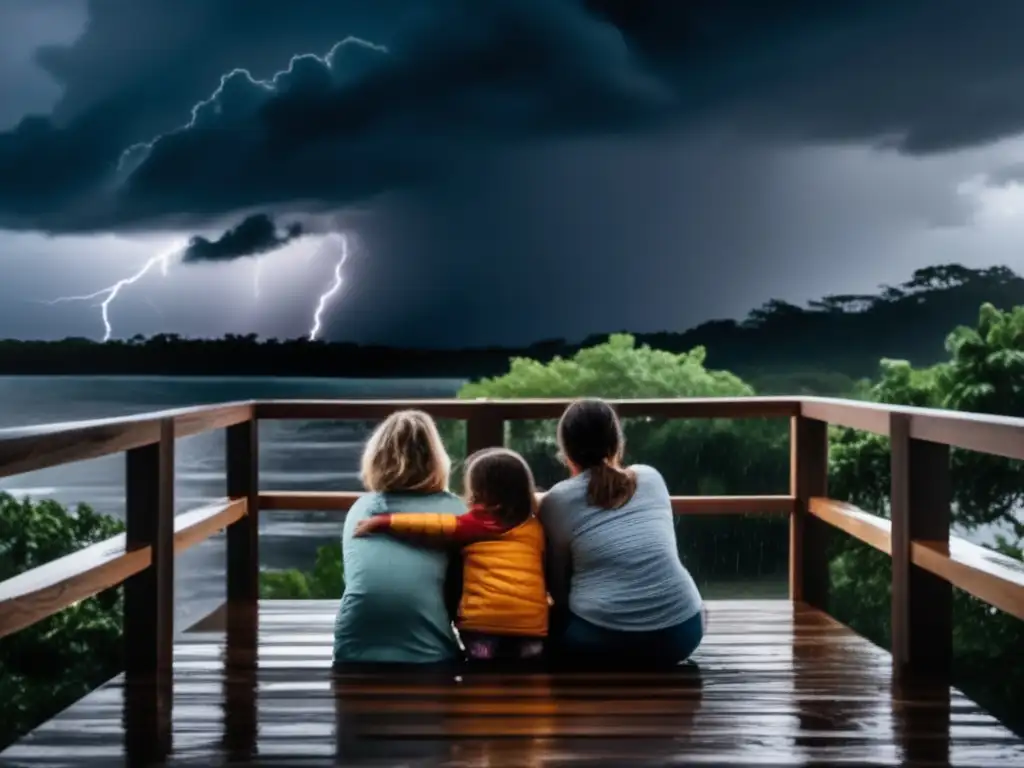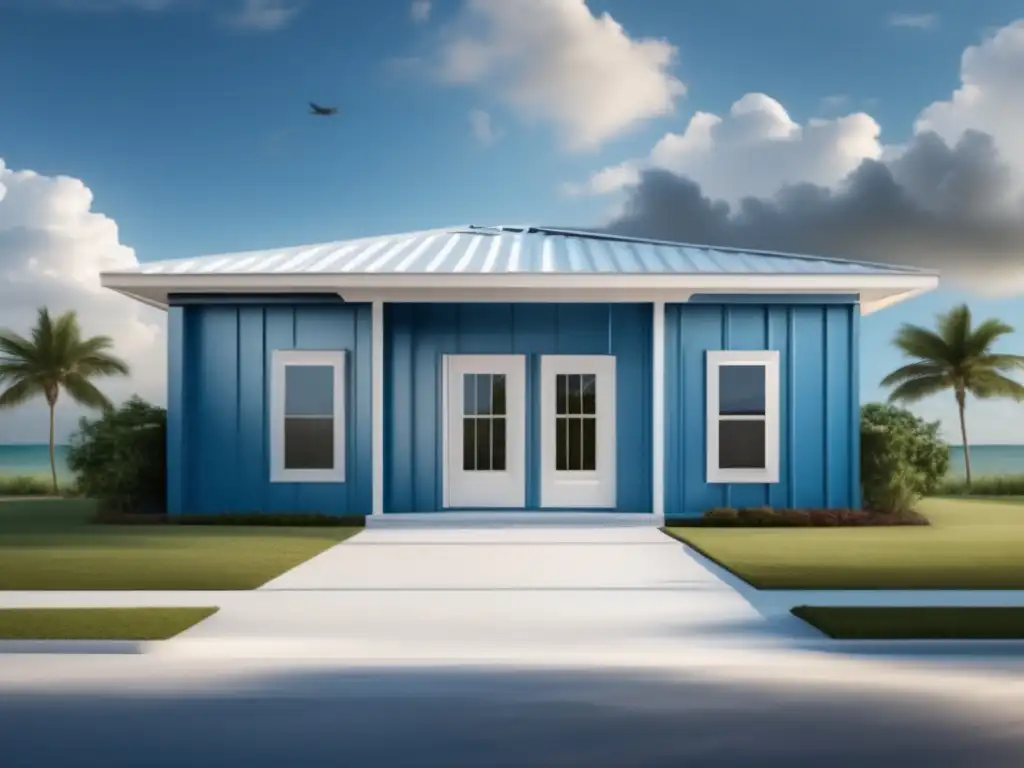Family Safety First: Creating A Hurricane Preparedness Plan

Family Safety First: Creating a Hurricane Preparedness Plan
Introduction
Being well-prepared for a hurricane can make a significant difference in minimizing the risk of harm to your family and protecting your property. During a hurricane, it is essential to know what to do to keep yourself and your loved ones safe. Creating a preparedness plan is one of the most effective ways to be ready for a hurricane and its aftermath. This article will provide you with the knowledge and tools necessary to create a thorough hurricane preparedness plan.
Step 1: Understanding Hurricane Risk

Know Your Risk
Understanding your hurricane risk is the first step in creating a hurricane preparedness plan. The risks of hurricanes vary across the country. People who live in coastal areas are at greater risk of experiencing the devastation of a hurricane than those who live inland or further away from the coast. You can determine your risk level by checking your community's hazard map or by contacting your local emergency management agency.
Learn the Terminology
Learning hurricane terminology can help you better understand weather reports and warnings. For example, a hurricane watch means a hurricane may occur within 48 hours, while a hurricane warning means that a hurricane is expected within 36 hours, and you should take immediate action to prepare.
Know Your Evacuation Zone
Evacuating before a hurricane hits is critical in ensuring your family's safety. Your local government will issue evacuation orders for certain areas during a hurricane. Knowing your evacuation zone in advance can help to ensure that you leave early enough to avoid the traffic congestion that can occur as everyone begins to evacuate simultaneously. You can find out your evacuation zone via your local emergency management agency or other local authorities.
Step 2: Make a Plan

Create an Emergency Communication Plan
An emergency communication plan is vital if you get separated from your family during a hurricane. Your family should have a designated meeting place and a way to contact each other. It's also wise to have backup communication plans in case phone lines are down or busy. You should put key contact information in writing and keep it in a safe place, like a waterproof plastic bag.
Plan for Evacuation
Your preparedness plan should include an evacuation plan in case of an emergency. Be sure to take into account transportation, lodging, and any necessary equipment or supplies. It is advisable to store valuable documents in a waterproof container, along with other essential items such as medications, cash, and clothing. Additionally, make arrangements for your pets; not all shelters accept animals, so you should identify pet-friendly lodging and make appropriate arrangements in advance.
Assemble an Emergency Kit
Having an emergency kit ready to go can significantly reduce the time it takes to prepare for a hurricane. The kit should contain enough food, water, medications, cash, and other necessities to last at least three days. Additional crucial items include a first aid kit, a flashlight, extra batteries, a whistle, and personal hygiene supplies.
Step 3: Stay Informed

Get Local Alerts and Warnings
It is critical to stay informed during a hurricane. Local alerts and warnings are issued by the National Weather Service and other local authorities. You can sign up for text, email, or social media alerts from your local emergency management agency or the Federal Emergency Management Agency (FEMA) to keep up-to-date on necessary information.
Monitor Weather Conditions
During a hurricane, it is essential to monitor weather conditions. Local radio or television stations can provide updates on the storm's path and potential threats. Additionally, the National Hurricane Center provides frequent updates on hurricanes via their website and social media channels.
Step 4: Take Action

Protect Your Home and Property
Protecting your home and property during a hurricane is critical in mitigating damage. If there is sufficient time before the hurricane hits, take necessary precautions such as boarding up windows and securing outdoor furniture. Additionally, it is essential to have an evacuation plan in case of severe damage to your home.
Follow Evacuation Orders
If local authorities issue evacuation orders, it is crucial to follow them promptly. Not evacuating when instructed could be life-threatening.
Stay Safe During the Hurricane
During a hurricane, it is essential to stay safe and follow important safety practices. Stay indoors, away from windows, and avoid areas prone to flooding. If necessary, evacuate to a safe location.
Frequently Asked Questions

-
What documents should I include in my waterproof container?
You should include birth certificates, passports, insurance policies, wills, deeds, and other critical documents in your waterproof container.
-
How much food and water should I have in my emergency kit?
Prepare at least three days' worth of nonperishable food and water for each person in your household.
-
Can I stay in my home during a hurricane?
It is generally not recommended to stay in your home during a hurricane, especially if you live in an evacuation zone. If you choose to shelter in place, be sure to follow all safety guidelines.
-
What should I do if I get separated from my family during a hurricane?
If you become separated from your family during a hurricane, contact the designated emergency contact person identified in your communication plan. If that is not possible, call or text local authorities and let them know your whereabouts and situation.
-
How do I find out my evacuation zone?
You can find out your community's evacuation zones by checking your community's hazard map or by contacting your local emergency management agency.
Conclusion
Creating a hurricane preparedness plan is essential to ensuring the safety of yourself, your family, and your property during a hurricane. It is essential to take steps in advance, such as understanding your hurricane risk, creating an emergency communication plan, planning for evacuation, and assembling an emergency kit. Stay informed of weather conditions and heed evacuation orders issued by local authorities. Know that preparation and taking action ahead of time can make a significant difference during a hurricane and its aftermath.
For more information on hurricanes and hurricane preparedness, visit Ready.gov/hurricanes.
Additional Resources

- Federal Emergency Management Agency (FEMA)
- National Weather Service Hurricane Preparedness
- National Hurricane Center
 Portable Dehumidifiers
Portable Dehumidifiers Safeguarding Your Home: A Comprehensive Guide To Hurricane Shutters
Safeguarding Your Home: A Comprehensive Guide To Hurricane Shutters Temporary Roof Patches
Temporary Roof PatchesIf you want to discover more articles similar to Family Safety First: Creating A Hurricane Preparedness Plan, you can visit the Hurricane preparedness: category.
Leave a Reply

Articulos relacionados: